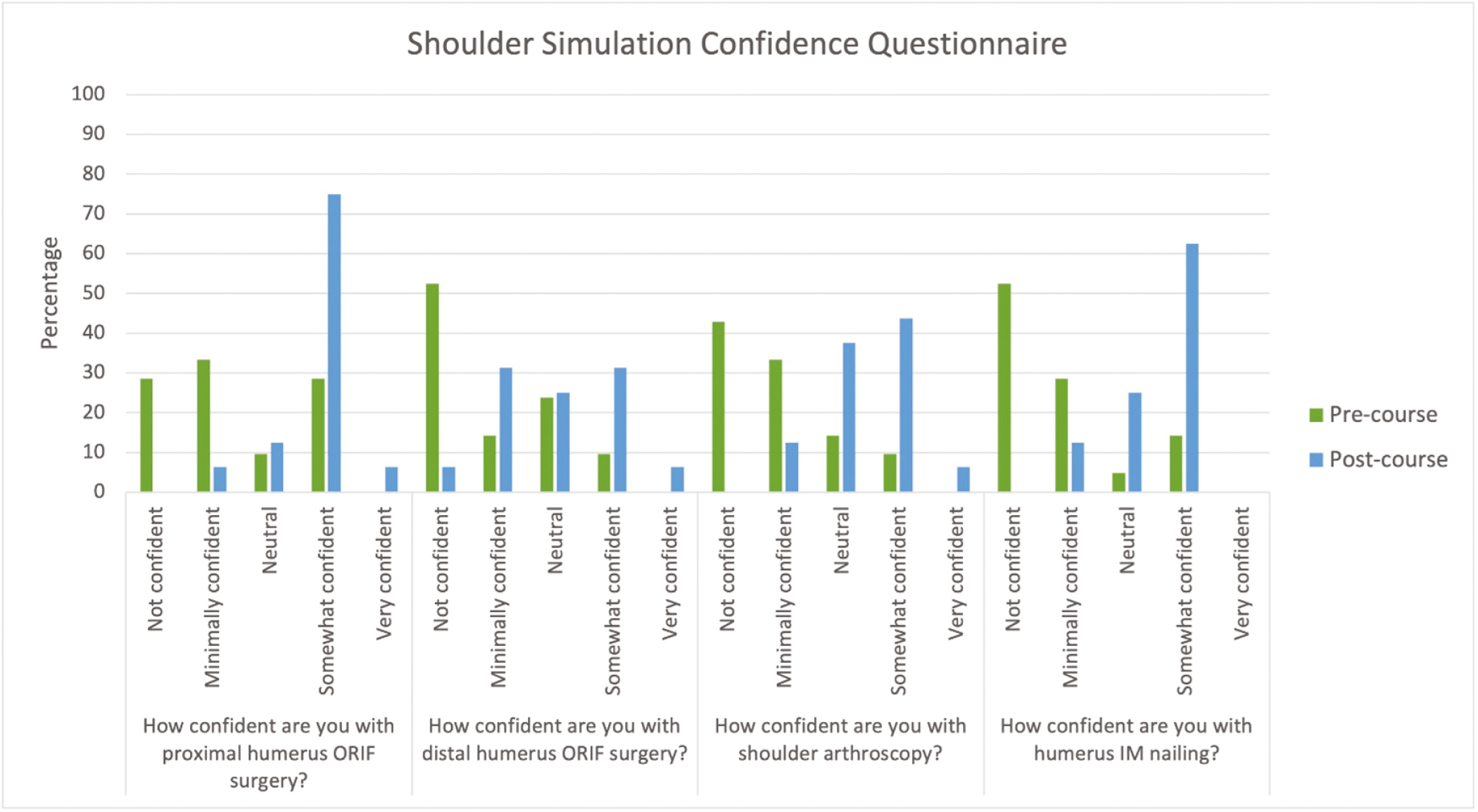
Simulation-based education (SBE) has been shown to be an effective training tool within clinical medicine, conferring ‘real-world’ benefit within trauma & orthopaedics (T&O) [1]. A recent survey of T&O trainees demonstrated that 100% felt SBE was important for their training [2]. Within the regional T&O training programme in Northern Ireland, the implementation of novel SBE events has been piloted to help address curriculum deficits, allow safe skill acquisition, and make T&O training more attractive to junior doctors with excellent outcomes [3].
A hybrid-model Upper Limb simulation course was developed by simulation and education leads targeting shoulder arthroscopy and humeral fracture fixation. This was delivered in November 2023 using a group simulation framework model with pre-brief and introductory lecture, followed by groupwork, and completed with debrief and feedback.
The groupwork comprised of four stations through which the candidates rotated: passive haptic feedback virtual reality (VR) trainer and three consultant-led sawbone procedural stations (Proximal Humerus Fixation, Distal Humerus Fixation, and Humerus Intramedullary Nailing). The course was facilitated by shoulder fellowship trained faculty. Feedback was collated pre- and post-course using Likert-scale questionnaires to identify learner needs and outcomes.
Pre-course, learners reported confidence levels in four domains: Shoulder Arthroscopy, Proximal Humerus Fixation, Distal Humerus Fixation and Humerus Fracture Intramedullary Nailing. Confidence was reported as ‘Not Confident’ or ‘Minimally Confident’ in 71% of responses across all domains. The learning requests were technical tips and increased confidence and practice.
Post-course, there was a significant improvement in confidence across all four areas, with the biggest improvement seen in junior trainees. Fifty-eight percent of trainees selected ‘Somewhat Confident’ or ‘Very Confident’ across all the domains. ‘Not Confident’ or ‘Minimally Confident’ was only selected in 17% of responses (Figure 1-A106). Positive feedback included the fidelity of the VR trainer and consultant teaching. Suggestions for improvement included more demonstrators and time for each station.


We have further demonstrated that SBE is a powerful tool in regional T&O training, building on the work of lead educator focus groups. High and low-fidelity scenarios empowered trainees to acquire new skills and develop existing ones in a psychologically and clinically safe environment. Due to its success locally and within the literature, SBE will be used to augment regional T&O training. We aim to make it a staple feature of the regional teaching programme to drive development of new, validated learning methods for trainees.
Authors confirm that all relevant ethical standards for research conduct and dissemination have been met. The submitting author confirms that relevant ethical approval was granted, if applicable.
1. Bartlett JD, Lawrence JE, Stewart ME, Nakano N, Khanduja V. Does virtual reality simulation have a role in training trauma and orthopaedic surgeons? The Bone & Joint Journal. 2018;100-B(5):559–565.
2. Seil R, Hoeltgen C, Thomazeau H, Anetzberger H, Becker R. Surgical simulation training should become a mandatory part of orthopaedic education. Journal of Experimental Orthopaedics. 2022;9(1):22.
3. Moffatt R, Napier R. Integrating simulation based education to trauma & orthopaedic training: a regional experience. International Journal of Healthcare Simulation. 2023;3(suppl 1):A63–A63.
The authors would like to thank Dr Nicola Weatherup and Dr Bronagh McCarragher for their input and advice in applying simulation teaching models.